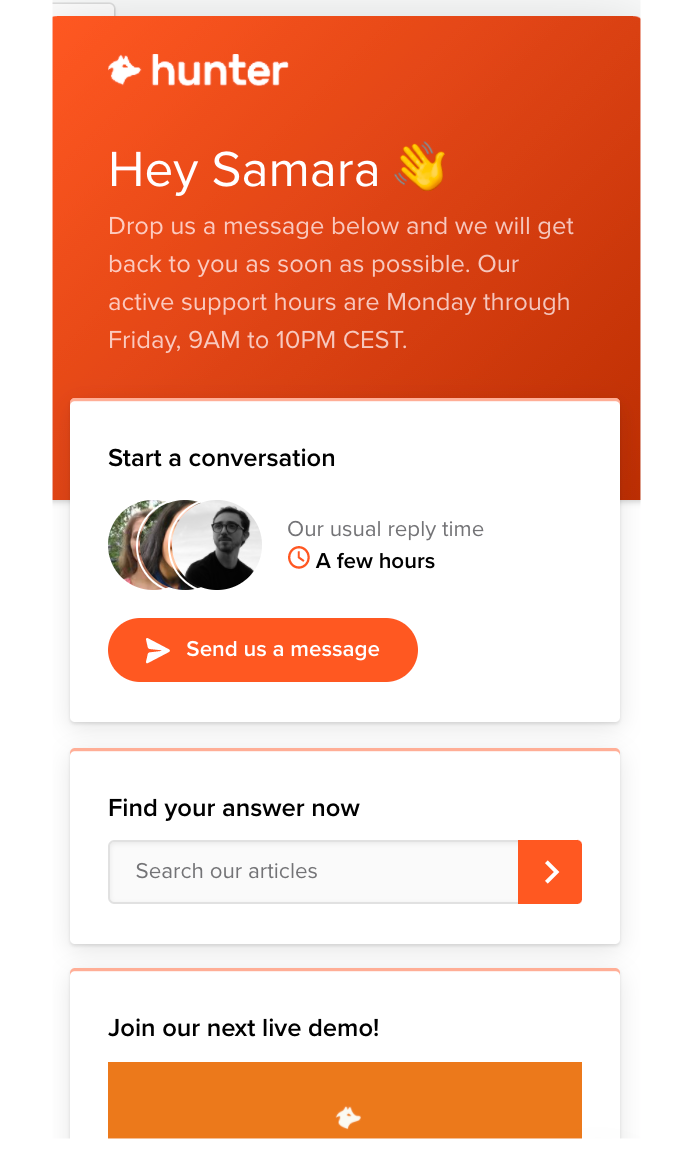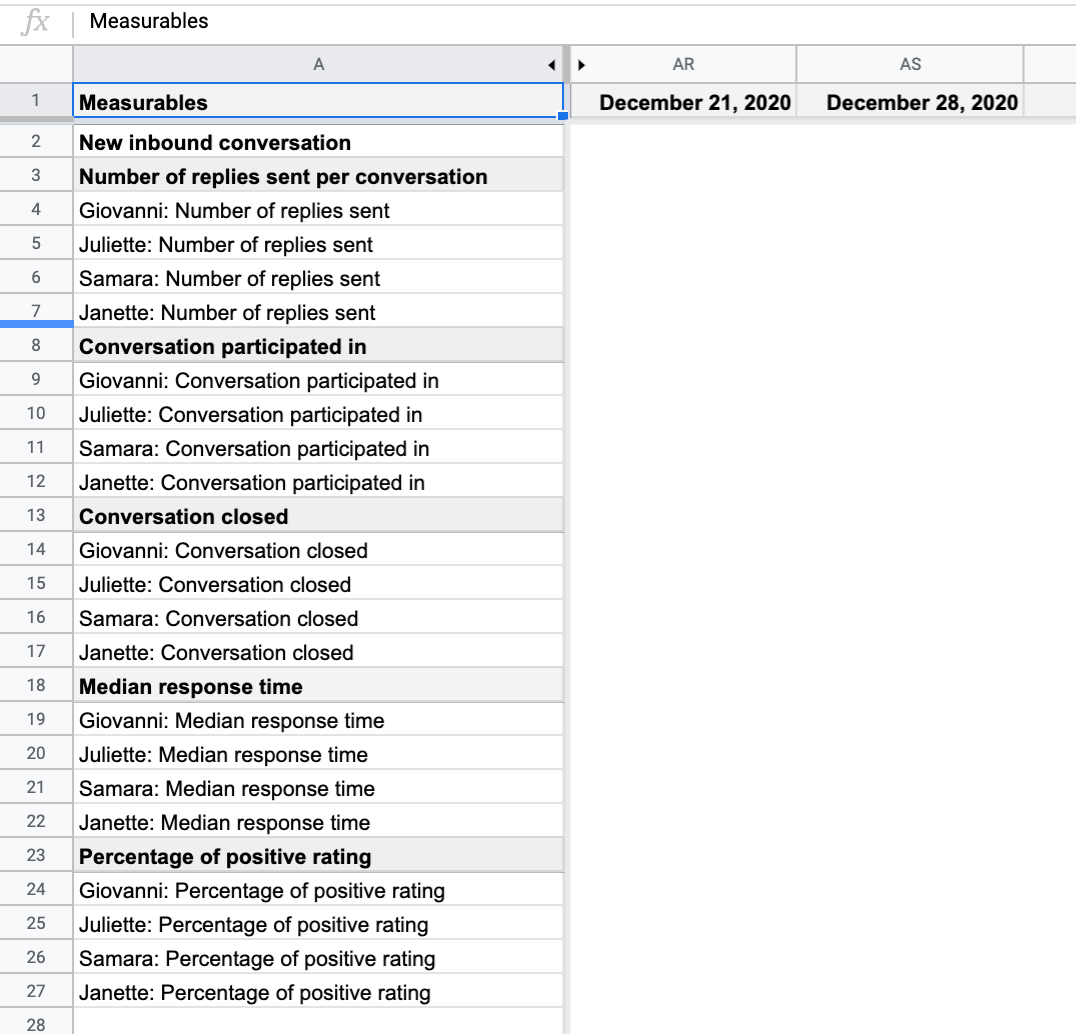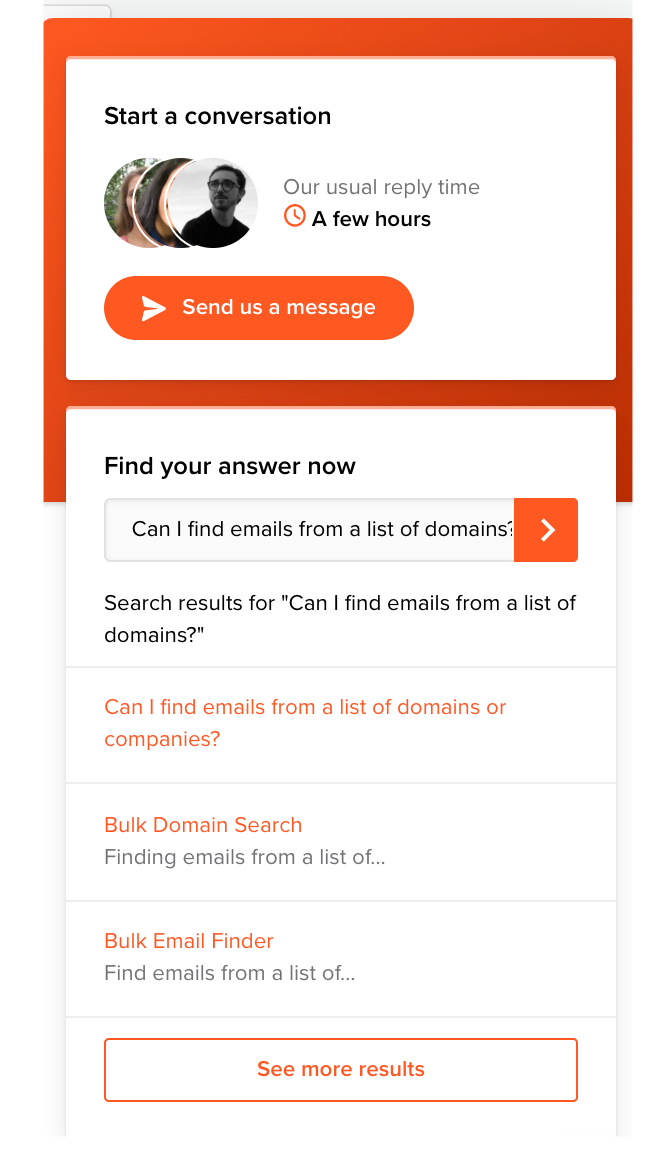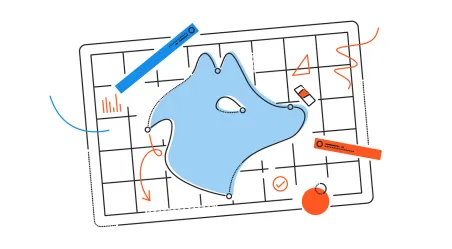What Makes a Great Customer Service: Hunter Team Explains

It doesn't matter how exceptional your product is if your customer service is lacking. After all, these days, one bad customer service experience can put off an existing or potential customer from your company forever.
Fast response times, empathy, and detailed answers when contacting customer support can change the way your customers think about your company and can keep them coming back.
Here at Hunter, even though our team strives to make our product as user-friendly and intuitive to use as possible, issues and questions are inevitable. That's why our support team has tried and tested several systems and tools to ensure we're not only providing great support to our customers but creating an efficient internal system that makes creating a great customer experience possible.
Whether you provide customer service by phone, email, or live chat, we wanted to share our thoughts on what makes great customer service, share the behind the scenes on how Hunter does customer support, and the tools we use. We hope our lessons will inspire you and your team to provide professional and great customer service.
Working collaboratively as a distributed customer success team
Building a great customer support team across multiple time zones and locations is challenging. Fortunately, technology and collaborative productivity tools have disrupted how companies build their support teams. And as a result, businesses are able to deliver a stellar customer experience as there is access to 24/5/365 coverage, as well as multilingual and multicultural support.
For example, Hunter’s Success team includes 4 team members who all work remotely. The team is spread out across Europe and Canada, to ensure plenty of coverage for our international customer base. The success team includes our customer success manager, an account manager, and 2 success members.
This means that, by having a distributed team, it helps ensure that all your customers can receive a response in a timely manager. In Hunter, our aim is to respond in less than a business day.

But, how do you manage and respond more effectively and efficiently to users? You may be aware of some of the help desk software out there, including a better ticketing process, enhanced customer service experience, and customer satisfaction, and increased team productivity.
For example, you can interact directly with your customers using specific help desk tools such as Intercom which is the primary tool we use.
Furthermore, to ensure requests are prioritized based on the type of customers (free/paid) and location, you can create different teams in Intercom where new support requests are automatically assigned to a team when you receive them.

You can also create a tagging system to identify different types of support inquiries. For example, we use the tag Lead to track Demo requests, custom plan requests, and general sale inquiries.

Using tags can be helpful to know if there’re specific bugs or data-related problems that are affecting multiple users. Using that information, we then create a GitHub report for our engineering and product team to investigate further.
Another great way to collaborate is giving the opportunity to your Customer Success team to work on side projects that can empower them to have a responsibility and a sense of purpose. That means giving them a say on the strategy, projects, and processes that impact their work. You can also use this as a way to hone and improve project management skills that your team can use for major projects down the road.
An example of how this works in Hunter is when our Success Team grew the team from 2 to 4 people in 2020. We introduced one full day off once a week from providing customer support to ensure that everyone can disconnect and work on side projects instead. Each team member takes a break from the Intercom on different days, to ensure there’s someone on support. It still allows us to have a fast response time and high customer satisfaction.
We also work on side projects on a 3-months cycle. For example, for the last cycle, we worked on updating and improving the Help Center, improving the backend of our user admin area with the help of our engineering team, and we also started offering fortnightly webinars.
By working in 3-months cycles, it has helped us implement new ideas, tools, and processes in place to continue supporting Hunter’s mission and providing great customer service. Project management tools help us to prioritize tasks, track progress and keep everything transparent among different teams.
Overall, working on side projects has been a great way to build a sense of ownership, explore and learn new skills, and make customer support more fun when you can do project work on the side.
Response Time
Delivering great customer service is getting more challenging for businesses as customer expectations change. Customers now want instant service and expect to have a response within a few hours.
While you aim to respond quickly, you can also keep an auto-message in your customer chat mentioning that you'll reply in a few hours. This sets customer expectations for when they should expect a response from your team, allowing them to move on to doing something else. It’s always best to over-deliver (or surprise them) with a quick response rather than promise a specific response time and fail to meet it.

Furthermore, to help prioritize conversations in your customer chat, you can separate team inboxes. For example, In Hunter, we created team inboxes such as “America”, “Europe”, and “Refunds and cancellations". It ensures the team inbox is easy to scan, see who and how many users and visitors are waiting for a reply to ensure that we have a prioritization for most of the conversations.

Weekly success and pair-support meetings
The challenge of working with a remote team is always around communication and collaboration. For Hunter, it also means to be really disciplined about how to communicate to keep providing value to the customers. To make this happen, you need to work hard to continually get feedback from your users and communicate it to the team.
For example, we do this by having one-on-ones once a month with our customer success manager, weekly pair support meetings with other members of the team, and weekly success meetings. This helps to surface problem areas with the product earlier on and if a customer is unhappy about something or really needs help, you can address such issues quickly.
The weekly pair support is 60 minutes long every week that we get to spend directly doing support while sharing our screen together with the other support team members. This is to help find a common way to resolve recurring issues or situations provided by the users, stimulate communication among support team members and get new ideas on how to improve the service and how to provide great customer support.

During the weekly success meeting, we go over the previous week’s performance using our Scorecard. This is a simple spreadsheet that allows us to track the most important customer success metrics and grade customer service interactions.
It is helpful to self-evaluate yourself since you may not need to meet specific targets and everyone on the team can monitor their productivity.
You can use a tool like Notion to keep the scorecard and look at the big picture — beyond individual conversations, are customers actually seeing value from the product? It also helps ensure we're addressing the customer’s issues, monitor the support volume for hiring purposes, maintain a positive tone when responding, and perform proactive follow-up with any unhappy customers.

We closely look at the:
- New inbound conversations: to monitor the volume of support requests we receive.
- Number of replies sent per conversation: to understand if we were involved in long chats or email threads.
- Conversation participated in: the number of support tickets handled from each team member. We always try to ensure that requests are equally distributed across the team.
- Conversation closed: support emails/chats closed during the week;
- Median response time: median time it takes your team to respond to the first incoming message in a conversation.
- Percentage of positive rating: our customers’ ratings of any new inbound conversation. We always try to achieve a 90%+ positive rating.
Help customers help themselves
Great customer service means letting people help themselves. This means customers want to find answers to their questions or issues themselves without contacting support more than ever before. This can cut down on the number of conversations in your support queue.
What are the most common types of issues and questions your customers want to be resolved? There’s your starting point. You can aim to create a solid and effective help center by publishing a series of short articles that address these issues and make them really easy to find.
While one of Hunter’s core values is simplicity – we believe that developing simple and easy-to-use functionalities has the most significant impact, so we wanted to create a Help Center with different FAQs and help articles to guide our users.
You can constantly update your Help Center as it’s a great way to help your customers find explanations to questions on their own and offer shorter support waiting time which can help increase customer satisfaction.
We also aim to include GIFs, videos, and screenshots where applicable to help our users.

Furthermore, if you are using Intercom to manage your customer communication, you can utilize Intercom’s smart suggestions feature to automatically recommend help articles when users contact your chat and email support. This cuts down on the number of conversations in your support queue and offers quicker resolutions for your customers.

Lastly, another great way to help customers and deliver additional value is using webinars to keep your customers engaging with you. Not only that, your customers can also ask questions and get real-time feedback.
For Hunter, we started offering fortnightly webinars using Livestorm, where we show new and current customers how to get started with Hunter.
Webinars also allow us to be closer to our customers and identify the most common questions during the onboarding process that can lead to new support requests.

Listening to customers
If you never ask for customer feedback, you’ll never know what you can do more of, and if you don’t know what’s wrong, you can’t do less of it either. Collecting user feedback provides a powerful understanding of your customers and service or product so that more customers are satisfied with your business.
There're also various ways to collect customer feedback, such as surveys or user activity, but with today’s technology advances, there’re tools that make it easier to collect customer feedback. With the right tools, you can recognize unhappy customers and reduce customer churn, as well as refine your service or product so that more customers are satisfied with your company.
Having said that, one common pain point the support team experienced in Hunter is not having a great method to track customer feedback and a way to communicate it back to the product team based on the regular feature requests.
After trying various tools, we decided to use Acute as it seamlessly integrates with Intercom and allows us to track feedback in a few clicks.

We decided to also create different tags such as Feedback and Issue to track issues as that helps us to understand if there are recurring problems for our customers.
Using specific tags can also be helpful to know if there are specific bugs or data-related problems that are affecting multiple users. We then create a GitHub report for our engineering and product team to investigate further.
We have created a prefilled template to ensure the report will be clear, consistent, and intuitive for the team.

Beyond the tools for collecting customer feedback, one of the best ways that you can show your customers that you see them as a person first, is by listening to their underlying emotions.
You can do this by ensuring your tone is the most essential part of our communication, and pay attention to it in all your communication.
Overall, your tone can adjust based on what you’re doing and how the customer feels. For example, if we are educating a user on how to do something, we are encouraging and explicit. We also think that it's fine to take an extra email to resolve a conversation to help us get more details or clarification.
We also always ask our users to share a screenshot or a short video with us to investigate the issue further. It can provide you with more time to evaluate the problem, review where the issue is, and share a resolution with the customer much quicker. It can also be helpful to be on the same page with the user right away and cuts down on the back-and-forth emails.
If a customer is disappointed, we are more empathetic and apologetic (no emojis added and we always prioritize a more formal tone).
Furthermore, it’s totally okay to ask further questions to figure out what went wrong. For example, we send the following email to our users with no activity in their Hunter account, to help us understand what we can do to improve and help them in case they’re stuck at any point.

To dig in deeper, if a customer responded with a 1 for the missing feature without including much information, we would reach out to ask further clarifying questions about the missing feature to learn more about their needs and use case.

Wrap up
If there’s one lesson you can walk away with, we would like it to be to start simple and evolve your customer success team and product through continuous feedback.
You can find out what your customers think and feel about your product and/or services by listening carefully to what they say.
After all, for any business, great customer service will be your greatest asset. It’s key to ensuring that your customers are happy and they keep coming back for more.
Have questions or feedback? Don’t hesitate to ping us on Twitter or at contact@hunter.io.




 Send cold emails with Hunter
Send cold emails with Hunter